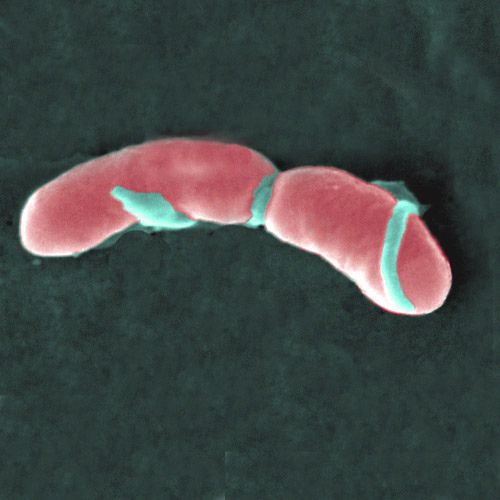-
 ISRO
ISRO
-
 Red panda
Red panda
-
 Regiospecific
Regiospecific
-
 Hawking radiation
Hawking radiation
-
 DAT
DAT
-
 Tail assembly
Tail assembly
-
 Anti-diarrhoeal agent
Anti-diarrhoeal agent
-
 EFSA
EFSA
-
 Nucleoside monophosphate
Nucleoside monophosphate
-
 Rotator cuff
Rotator cuff
-
 Biome
Biome
-
 Circuit routing
Circuit routing
-
 Endocrine disruptor
Endocrine disruptor
-
 NAT
NAT
-
 Rhombohedral system
Rhombohedral system
-
 Quaoar
Quaoar
-
 Group of galaxies
Group of galaxies
-
 Oncomodulin
Oncomodulin
-
 Drainage basin
Drainage basin
-
 Downy oak
Downy oak
-
 Container return scheme
Container return scheme
-
 Cillosis
Cillosis
-
 Silkworm
Silkworm
-
 Pigmentation
Pigmentation
-
 Astrometric direction
Astrometric direction
-
 Oligodendroglioma
Oligodendroglioma
-
 Costal
Costal
-
 Geoportail
Geoportail
-
 TSI
TSI
-
 Capsid
Capsid
Listeria
Listeria monocytogenes bacterium causes listeriosis, a rare but serious infectious disease.
Characteristics of Listeria
Listeria monocytogenes is a mobile Gram positive bacterium which does not produce spores. The cell is 1 to 4 micrometres long and 0.5 micrometres wide and forms short chains or small clusters.
Its genome is composed of a chromosome containing approximately 3 million base pairs that code 3,000 proteins.
The bacterium can grow in the presence or absence of oxygen (facultative anaerobe) between 1°C and 45°C,. It is relatively resistant to salt and drying and is easily destroyed by heat.
Listeria and listeriosis
These features explain why it can survive for long periods of time in the environment and in animal and human cells and grow slowly at food refrigeration temperatures (4°C). In adittion, it can cross the placenta and enter the central nervous system (meningo-encephalitis).
The virulence genes are coded by a well-defined chromosomal region. Despite listeria being sensitive to most antibiotics which are effective on Gram positive bacteria, the mortality rate is as high as 20 to 30% and leaves neurological complications in 40% of cases.
 The Listeria monocytogenes bacterium is the agent responsible for listeriosis. © AJC1, Flickr, CC by-nc 2.0
The Listeria monocytogenes bacterium is the agent responsible for listeriosis. © AJC1, Flickr, CC by-nc 2.0
Latest
Fill out my online form.



